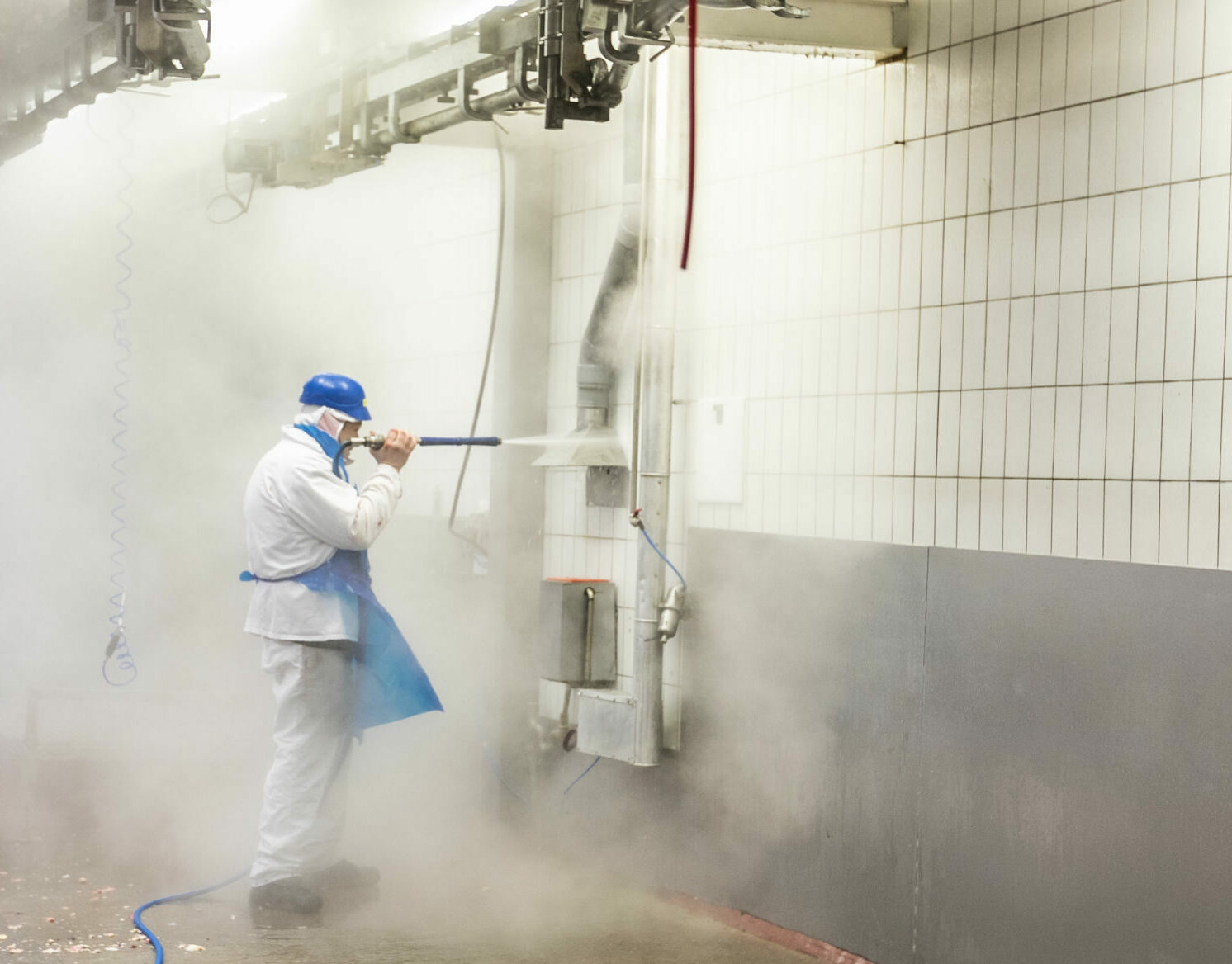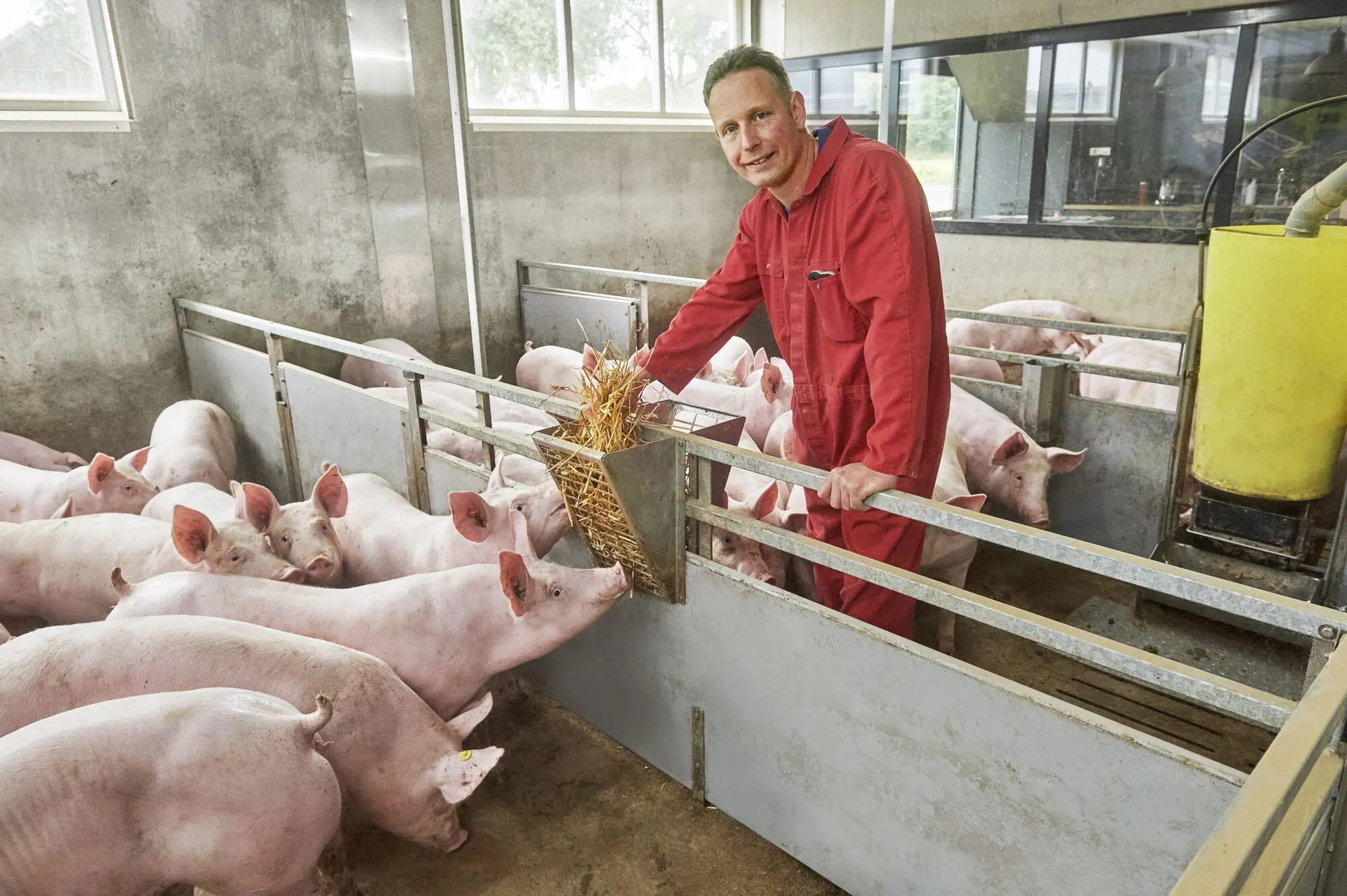How we are inspected by external parties
External inspections in abattoirs are mandatory and necessary. These inspections are conducted by the responsible inspectorates. In the Netherlands, this is the Netherlands Food and Consumer Safety Authority (NVWA). At least two supervising veterinarians are active during production in all Vion abattoirs. They organise the live inspections and meat inspections, during which all animals are checked for welfare and health. Moreover, independent, accredited certification agencies conduct inspections, and our customers often also send their own inspectors.


Inspection by veterinary authorities
In all Vion abattoirs, internal and external inspections are considered of great value. Particularly important for consumers are the regular inspections by the veterinary authorities. These are official government inspections in three key areas: official slaughter animal and meat inspections (abattoirs only), residue inspections (abattoirs only) and hygiene supervision of all Vion companies.
These government inspections mainly concern three areas:
When the animals arrive at the abattoir, they are individually examined by supervising veterinarians as part of the official slaughter animal inspection. The veterinarians pay particular attention to the health and welfare of the animals. They check whether only healthy animals are slaughtered. Only healthy animals may be slaughtered. If there are reasonable doubts as to whether the health and/or welfare of an animal meets the standards, the veterinarian will carry out additional tests or decide that certain animals are not admitted to slaughter. The official slaughter animal inspection at Vion is a key element to guarantee food safety for consumers.
Meat inspections serve to check and assess carcasses and by-products for suitability for consumption. This work is carried out by supervising veterinarians and inspectors. The supervising veterinarian must mainly ensure that the EC stamp is only awarded to meat that has passed the slaughter animal and meat inspection. The EC stamp indicates that the meat is suitable for consumption.
If the official meat inspection yields indications that a disease has spread throughout the carcass or affects the carcass as a whole, the animal will be labelled unfit for consumption and will not enter the food chain. Meat that has been declared unfit is rendered harmless and disposed of under official supervision. Any localised abnormalities in parts of the carcass or organs are removed under the supervision of a veterinarian.
The results of the official slaughter animal and meat inspections at the Vion companies are published on the page inspection results.
The use of medicines in livestock farming is subject to strict rules and is only allowed with a prescription from a veterinarian. After administration of medication, statutory withdrawal periods must be adhered to before an animal can be slaughtered. Livestock farmers must keep an accurate record of medicine use.
The official residue inspections in the abattoir check for compliance with the rules. One of the test programmes checks the residues of antibiotics in meat.
Announced and unannounced inspections of the Vion companies are held in accordance with an inspection schedule established by the NVWA. These hygiene inspections mainly concern the requirements imposed on food-producing companies based on food regulations. These check the hygiene characteristics of the location, such as management and maintenance, cleaning and disinfection of the production areas, the tracking system and a large number of additional requirements.
Independent inspections
Different customers assess the animal welfare efforts in different Vion slaughterhouses or have them checked by independent experts. Animal welfare aspects are also included in the annual inspections as part of the IKB, BLK and QS programs. Various companies are certified according to independent animal welfare standards (such as the Beter Leven quality mark, Tierschutzlabel, etc.).
Government supervision
At least two government-appointed veterinarians are always present at each Vion slaughterhouse. One of these veterinarians inspects all live animals as part of the inspection of the slaughtered animal and continuously supervises their stables and the stunning and slaughter of the animals. Any deviations are registered in writing, both by the government veterinarian and by Vion employees.
In addition, the government regularly conducts animal welfare audits at Vion. These audits not only concern the technical layout of the slaughterhouses, but also the correct functioning of all equipment and the correct working methods of all employees.
Camera surveillance
There are cameras and CCTV surveillance in all Vion slaughterhouses. These monitor working with animals 24/7.









